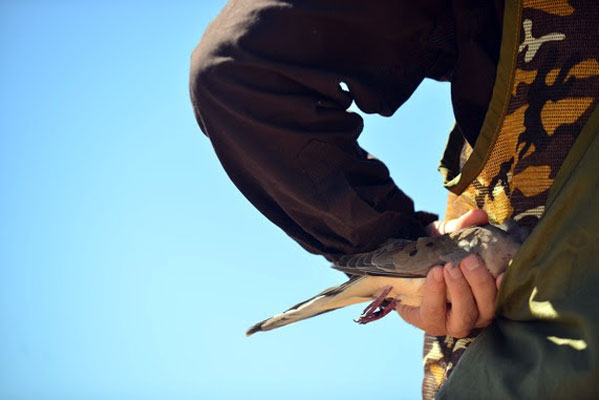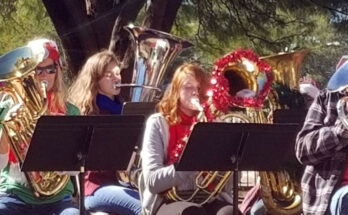“Second” season runs Nov. 21 through Jan. 4, 2026
Contributed Article/Courtesy AZGFD
ARIZONA – When it comes to experiencing some of the finest wing-shooting that Arizona has to offer, the “second” dove season — which opens Friday, Nov. 21 — is not to be missed.
Once again, the greatest number of doves will be concentrated in the state’s agricultural areas, particularly those that produce small-grain crops. That includes locations like Yuma, Buckeye, Eloy, Florence, Gila Bend, Toltec, and others. All National Park Service parks and monuments are closed to hunting unless specifically opened in Commission Order.
Unlike the 15-day “early” season that gets underway Sept. 1, the second season is much longer, lasting 45 days and running through Jan. 4, 2026.
As a reminder, a hunter can take any combination of mourning and white-winged doves as long as the total number of birds does not exceed the daily bag limit of 15 or the possession limit of 45 total. There is no daily bag or possession limit on invasive Eurasian collared-doves.
Notes: A fully feathered wing still must be left attached to each dove for identification purposes until a hunter reaches his or her permanent residence, or wherever the game meat will be consumed. Hunters are also encouraged to report any metal leg bands to reportband.gov.
All hunters 18 and older must possess a valid Arizona hunting license, as well as an Arizona migratory bird stamp — both of which can be purchased online at www.azgfd.com/license/. A youth combination hunt/fish license (for youth hunters 10 to 17) is only $5 and includes the privileges associated with the Arizona migratory bird stamp.
All dove hunters should review the “2025-2026 Arizona Dove and Band-tailed Pigeon Regulations,” which are posted at https://www.azgfd.com/Hunting/Regulations/. The regulations have been produced in a format that hunters will find particularly handy in the field. The color brochure is easy to read and features important hunting information, such as season dates, daily bag and possession limits, and legal requirements, at a glance.
Dove hunters play an important role in conservation. Wildlife and Sport Fish Restoration Program (WSFR) funds consist of excise taxes collected on the sale of hunting and fishing equipment (including 11 percent on ammunition), the benefit of which comes right back to Arizona for habitat improvements, shooting ranges, boating access, and more.
AZGFD offers additional dove-hunting information, including field-dressing tips and even a tasty recipe, at www.azgfd.gov/dove. For a complete listing of upcoming dove-hunting events, visit the department’s Outdoor Skills Network at https://register-ed.com/programs/arizona/170-outdoor-skills-network/name:dove
In addition to the late dove season that opens Friday, several other small game hunting seasons are underway, including quail (Gambel’s, scaled, California), Oct. 17, 2025-Feb. 8, 2026; waterfowl (ducks and geese), Oct 23, 2025-Jan 31, 2026; scaup (Nov 7, 2025-Jan 31, 2026); cottontail rabbit, July 1, 2025-June 30, 2026; chukar, Sept. 1, 2025-Feb. 8, 2026; and tree squirrel (excluding Mount Graham red squirrel), Oct. 3, 2025-Jan. 31, 2026. The season for Montezuma, or Mearns’ quail, opens Dec. 5, 2025, and closes Feb. 8, 2026.









